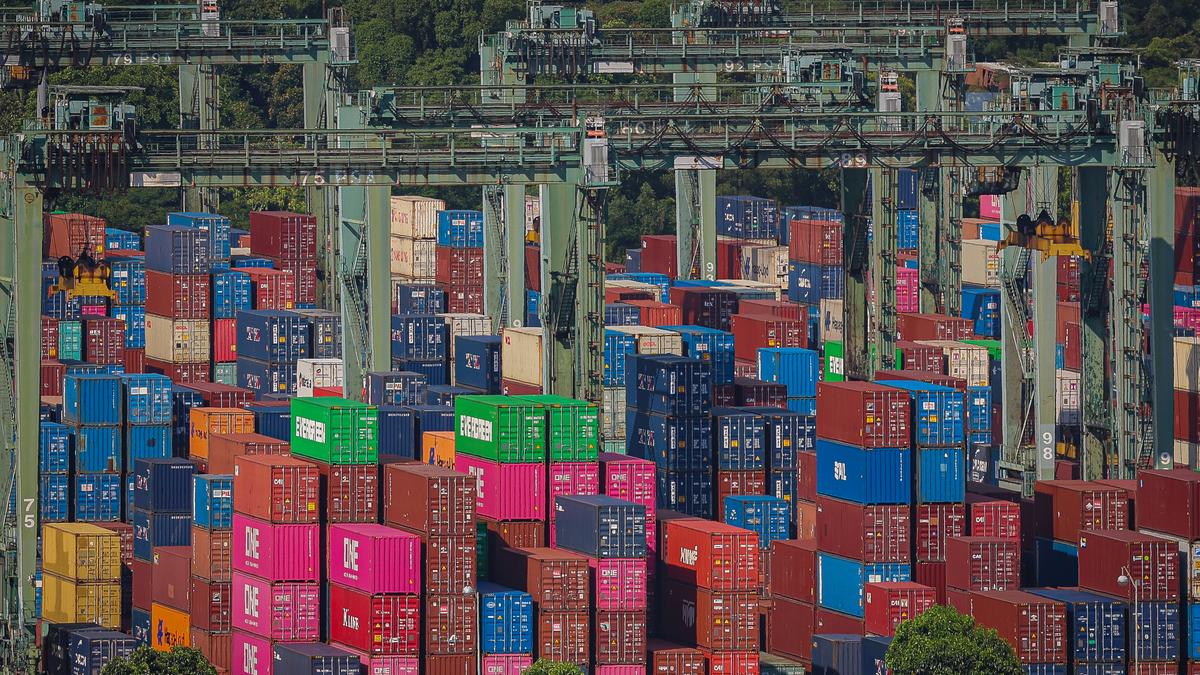
Will Trump’s tariffs bring in a recession?
The Hindu
U.S. President Trump's tariff war sparks global economic turmoil, threatening trade relationships and escalating tensions worldwide.
The U.S. has been the greatest champion of free trade and the chief architect of globalisation since the middle of the 20th century. However, in a stunning reversal of roles, U.S. President Donald Trump unleashed a carpet bombing of the global trading system on April 2, which he declared as “Liberation Day”.
The U.S. tariff, or the tax America levies on imports from other countries, was 2 to 3% for two decades until 2024 (Chart 1). However, President Trump declared on April 2 that the U.S. would henceforth be charging a minimum of 10% tariff on all its imports. Imports from about 60 countries will have a significantly higher-level tariff — which is being described as “reciprocal” tariffs. These include tariffs of 20% on the European Union (EU), 27% on India, and 46% on Vietnam.
Tariffs of 25% were imposed in February itself on Mexico and Canada, the U.S.’s neighbours and two of its largest trading partners. But the biggest jolt has been the tariff imposed on China, which supplies one-sixth of all foreign goods the U.S. consumes. Imports from China to the U.S., as of April 11, will now face tariffs of 145% (Table 1).
The markets recoiled with horror at the scale of the tariff increases and their uncertainty. Stock markets nosedived. China has retaliated, returning each tariff blow with equal ferocity. It has imposed 125% tariffs on imports from the U.S. There is a distinct possibility that the U.S. and the world are heading towards a painful economic recession. On April 9, President Trump reversed some of his decisions, announcing a 90-day pause on “reciprocal” tariffs for most countries while insisting that the steep tariffs on China would take immediate effect.
A commodity with a price tag of $100 imported from (say, Vietnam) would have cost $103 in the U.S. market if tariffs were 3%. However, the same good must be purchased for $146 when the newly announced tariffs take effect. Tariffs protect domestic industries from foreign competition but may lead to price increases.
With its high per capita income and low tariffs, the U.S. has been the largest export market for goods from cars to computers, aiding the creation of manufacturing jobs in several countries. In 2022, China exported goods worth $576 billion to the U.S., but the U.S., in return, could sell only $154 billion worth of goods to China (Table 2). Overall, the U.S. had a trade deficit of $1,311 billion, or 5% of its gross domestic product (GDP), in 2022. America has managed to continue buying more from the world than what it sells because of the dollar’s position as the dominant international currency. That is primarily thanks to China, which continues to back dollar-denominated assets, storing significant portions of its large export surpluses in U.S. treasury bonds. Such a mutually beneficial relationship between the two largest economic powers has been the key driver of the globalisation of trade and finance since the 2000s.
However, globalisation creates inequalities not only in the developing but also in the developed world. In the U.S., sectors such as steel and automobiles have been among the most hit by import competition.

 Run 3 Space | Play Space Running Game
Run 3 Space | Play Space Running Game Traffic Jam 3D | Online Racing Game
Traffic Jam 3D | Online Racing Game Duck Hunt | Play Old Classic Game
Duck Hunt | Play Old Classic Game











